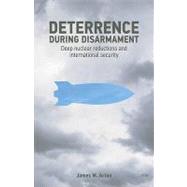
| Introduction | p. 7 |
| Why is there renewed interest in nuclear arms reductions? | p. 9 |
| Assessing the effect of deep reductions: deterrence effectiveness and strategic stability | p. 15 |
| Parameters and assumptions | p. 21 |
| Central deterrence | p. 25 |
| The case for the efficacy of small arsenals | p. 27 |
| Mirror imaging | p. 31 |
| Countervalue targeting | p. 35 |
| Russia and tactical nuclear weapons | p. 36 |
| Extended deterrence | p. 39 |
| Damage limitation | p. 40 |
| How effective is damage limitation? | p. 44 |
| Looking back: the Berlin Crisis | p. 49 |
| Extended deterrence and conventional power | p. 52 |
| Would a larger US nuclear arsenal help offset conventional weaknesses? | p. 53 |
| Crisis stability | p. 57 |
| Russian concerns | p. 59 |
| How much of a problem is crisis instability? | p. 61 |
| Managing Russia's fears | p. 64 |
| Basing modes and crisis stability | p. 65 |
| Rearmament stability | p. 71 |
| Armament drivers during the Cold War | p. 72 |
| What might prompt a state to be the first to rearm? | p. 75 |
| If one state rearms, will the other follow? | p. 79 |
| Nuclear multipolarity | p. 83 |
| Alliances | p. 84 |
| Opportunism | p. 88 |
| China's 'sprint to parity' and proliferation | p. 89 |
| Conclusions | p. 93 |
| Appendix: Where are we now? | p. 101 |
| Glossary | p. 107 |
| Endnotes | p. 109 |
| Table of Contents provided by Ingram. All Rights Reserved. |
The New copy of this book will include any supplemental materials advertised. Please check the title of the book to determine if it should include any access cards, study guides, lab manuals, CDs, etc.
The Used, Rental and eBook copies of this book are not guaranteed to include any supplemental materials. Typically, only the book itself is included. This is true even if the title states it includes any access cards, study guides, lab manuals, CDs, etc.